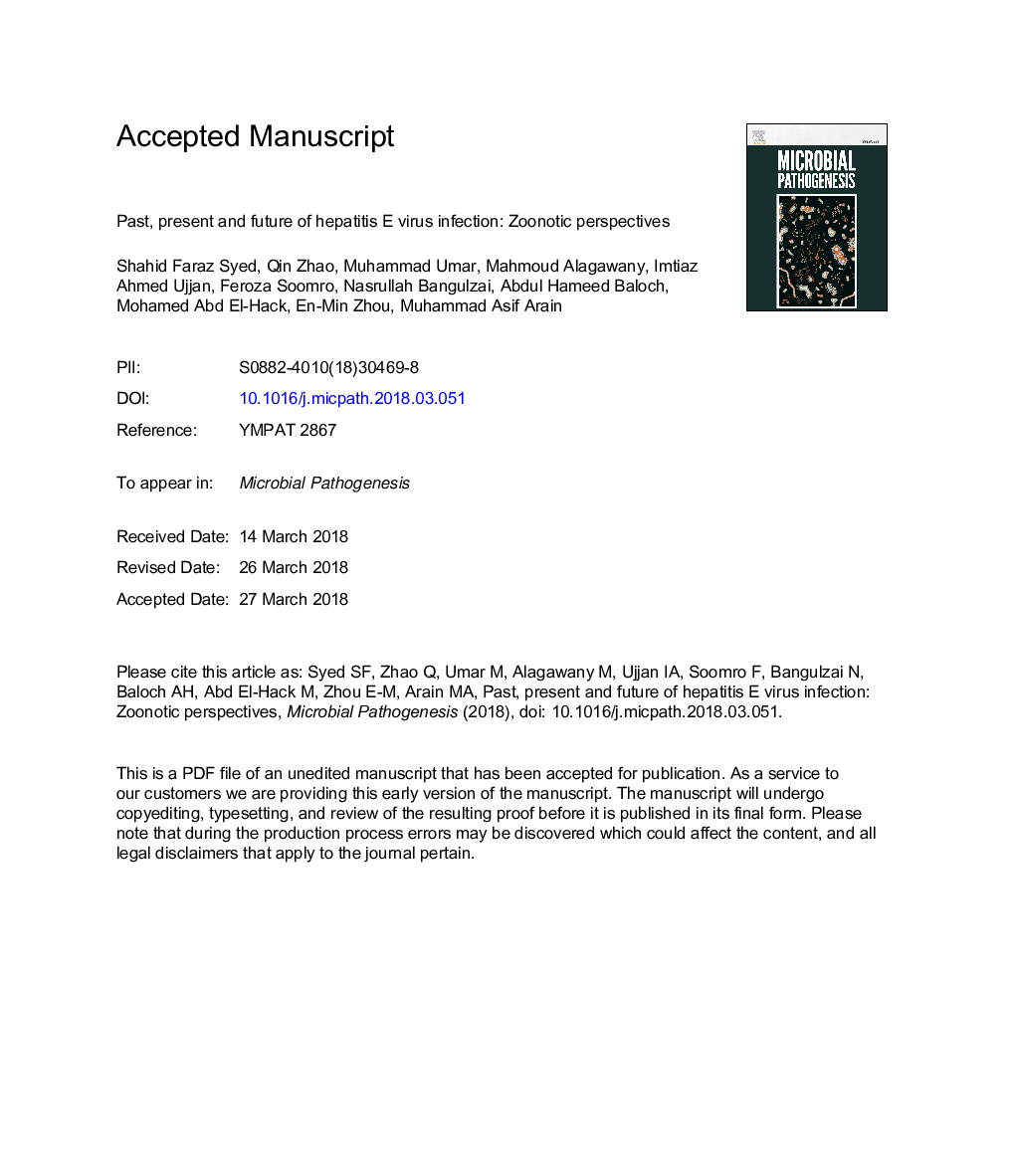| کد مقاله | کد نشریه | سال انتشار | مقاله انگلیسی | نسخه تمام متن |
|---|---|---|---|---|
| 8749481 | 1593670 | 2018 | 27 صفحه PDF | دانلود رایگان |
عنوان انگلیسی مقاله ISI
Past, present and future of hepatitis E virus infection: Zoonotic perspectives
دانلود مقاله + سفارش ترجمه
دانلود مقاله ISI انگلیسی
رایگان برای ایرانیان
کلمات کلیدی
موضوعات مرتبط
علوم زیستی و بیوفناوری
ایمنی شناسی و میکروب شناسی
میکروب شناسی
پیش نمایش صفحه اول مقاله

چکیده انگلیسی
The origin of hepatitis E virus (HEV) is not fully understood, but it is considered an emerging zoonotic pathogen. To date, HEV has been isolated from many animal species. The family Hepeviridae consists of two genera. The genus Orthohepevirus includes four distinct species (A, B, C, and D), each with distinct genotypes. Within the Orthohepevirus A species, HEV-1 and HEV-2 host ranges are restricted to humans, whereas genotypes 3 and 4 primarily infect a wide range of diverse animal species, in addition to being zoonotic to humans. Swine and wild boar species were previously thought to be the primary natural HEV reservoir, but recently rabbits have also been identified as major carriers. Moreover, increasing the number of HEV infections within the food supply chain underscore the important role of farming and food processing practices in limiting virus transmission. Notably, a Chinese commercial vaccine has the potential to protect humans and possibly animal reservoirs from HEV infection. This review summarizes the status of HEV infection worldwide in different animal species and outlines various modes of zoonotic transmission, with reference to cross-species transmission and recent vaccine developments.
ناشر
Database: Elsevier - ScienceDirect (ساینس دایرکت)
Journal: Microbial Pathogenesis - Volume 119, June 2018, Pages 103-108
Journal: Microbial Pathogenesis - Volume 119, June 2018, Pages 103-108
نویسندگان
Shahid Faraz Syed, Qin Zhao, Muhammad Umer, Mahmoud Alagawany, Imtiaz Ahmed Ujjan, Feroza Soomro, Nasrullah Bangulzai, Abdul Hameed Baloch, Mohamed Abd El-Hack, En-Min Zhou, Muhammad Asif Arain,